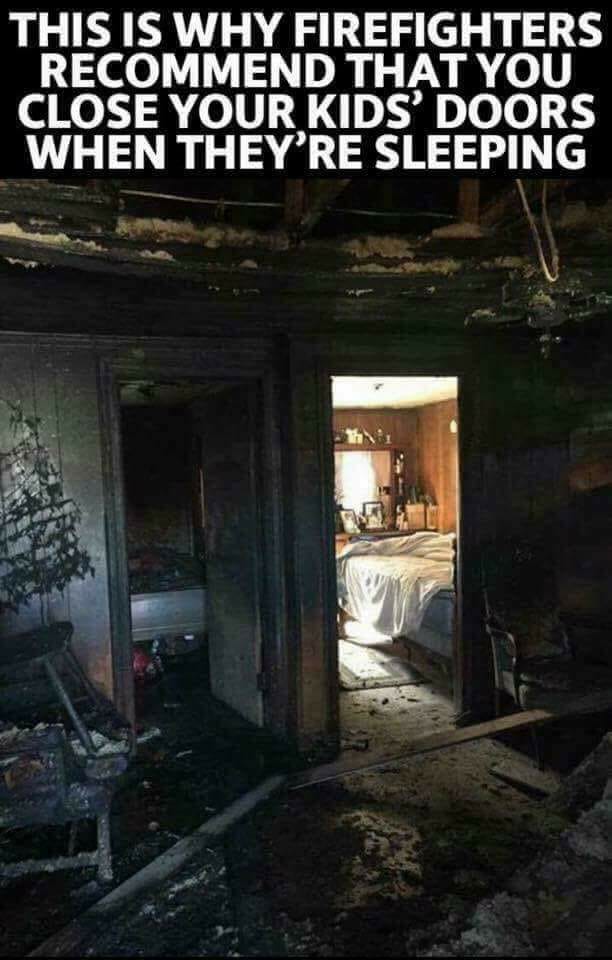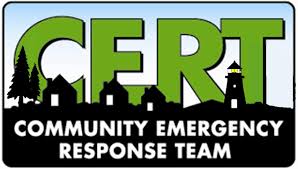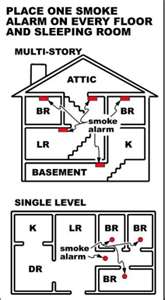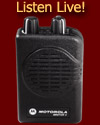|
 
FIRE PREVENTION
The Nanuet Fire Department is teaming up with the National Fire Protection Association (NFPA) to promote this year’s Fire Prevention Week campaign, “COOKING SAFETY STARTS WITH YOU” The campaign was developed to educate everyone about the small but important actions they can take to keep themselves and those around them safe.
NFPA statistics show that:
- Fire Departments in the United States responded to 1,353,500 fires.
- These fires caused 3,800 civilian deaths, 14,700 civilian injuries and $15.9 billion in property damage.
- Every 23 seconds, a Fire Department responds to a fire.
- A fire occurs in a structure at the rate of one every 65 seconds, and a home fire occurs every 93 seconds.
- 75% of all fire deaths were caused by home fires. This includes 64% that resulted from fires in one or two family homes and 11% caused by fires in apartments or other multi-family housing.
- 18% of fire deaths were caused by vehicle fires.
These numbers show that home fires continue to pose a significant threat to safety. In a fire, seconds can mean the difference between a safe escape and a tragedy. Fire safety education isn’t just for school children. Teenagers, adults, and the elderly are also at risk in fires, making it important for every member of the community to take some time every October during Fire Prevention Week to make sure they understand how to stay safe in case of a fire.
Today’s homes burn faster than ever. You may have as little as two minutes or less to safely escape a home fire from the time the smoke alarm sounds. Your ability to get out of a home during a fire depends on early warning from smoke alarms and advance planning.
It is important for everyone to plan and practice a home fire escape. Everyone needs to be prepared in advance, so that they know what to do when the smoke alarm sounds. Given that every home is different, every home fire escape plan will also be different.
Have a plan for everyone in the home. Children, older adults, and people with disabilities may need assistance to wake up and get out. Make sure that someone will help them!
Smoke alarms sense smoke well before you can, alerting you to danger. Smoke alarms need to be in every bedroom, outside of the sleeping areas such as a hallway, and on each level of your home including the attic and basement. Do not put smoke alarms in your kitchen or bathrooms.
For the best protection, use combination smoke and carbon monoxide alarms that are interconnected throughout the home. These can be installed by a qualified electrician, so that when one sounds, they all sound. This ensures you can hear the alarm no matter where in your home the alarm originates.
While NFPA and the Nanuet Fire Department are focusing on home fires, these messages apply to virtually any location.
Situational awareness is a skill people need to use wherever they go. No matter where you are, look for available exits. If the alarm system sounds, take it seriously and exit the building immediately.
To find out more about Fire Prevention and Home Escape Planning, please visit the NFPA web site at www.fpw.org.
 
It has been said many times that the most effective method of fighting fire is to prevent it from starting. For this reason, Fire Prevention is an important part of the Nanuet Fire Department's involvement with our community. Although we hold Fire Prevention programs year round, every October kicks off the National Fire Prevention Week campaign. During Fire Prevention Week, we conduct Fire Safety programs at local schools, senior centers and at community events.

The highlight of Fire Prevention Week comes when the Nanuet Fire Department hosts a Fire Prevention Open House. Open to all resident's young and old, fire trucks and firefighting equipment are on display for you to explore hands-on. Firefighters will also show off their skills in firefighting and rescue techniques. "Sparky the Fire Dog" will also be there. Come visit us and spend a few moments viewing Fire Safety videos and selecting Fire Safety information to bring home to discuss with your family. And please, ask those questions that you may have concerning any Fire Safety issues at home, school, or work.
       

The “Close Your Door” campaign aims to increase awareness of a new preventative measure that helps increase fire victim survivability.
A simple behavioral change, closing your bedroom door, could have a potentially life-saving impact. Tests showed that a closed door made a life-saving difference in case of a fire. A room with an open door showed temperatures over 1000 degrees, while a room with a closed door had temperatures at only 100 degrees. Research also showed that a closed door kept room conditions survivable longer than an open door.
A closed bedroom door provides a layer of protection between you and a fire, which is especially important at night when family members may be vulnerable, disoriented with little time to react. “If you can get out of a burning structure, get out,” “If you can’t, put a closed door between you and the fire to buy yourself valuable time.”
A closed door helps limit oxygen flow, which may help prevent a fire from growing. Consequently, when escaping a burning structure, it’s important to remember to close the door behind you to help limit property damage.
Forty years ago, victims had an average of 17 minutes to escape a burning home after the activation of a smoke alarm. Today, that time has dropped to 3 minutes or less due to evolutions in furnishings, homes incorporating more open layouts and lightweight construction materials, allowing fires to spread much quicker. With less time to escape a fire, it becomes of increasing importance to sleep with your bedroom door closed.
Visit http://www.CloseYourDoor.org for additional information about this important public safety message and the “Close Your Door” campaign.

The Clarkstown Police Department Child Passenger Safety Program is a public awareness and education program aimed at informing parents on the proper use and installation of child safety seats. The goal of the program is to ensure that all child safety seats are installed and used properly so as to provide the highest level of protection possible to children. The program educates parents on the proper use of child safety seats in vehicles and runs regularly scheduled child safety seat check-up events at the Nanuet Fire Department Sub Station located on Renee Lane in Bardonia. Call Sergeant Gorsky at (845)708-9258 x4081 if you have questions regarding child safety seats or would like to find out when the next child safety seat check-up will be conducted.
Babysitters Fire Safety Tips
As a babysitter, you are responsible for the children in your care. Here are some important Safety Tips you need to know if there's a fire emergency in the home where you babysit.
Before the parents leave, make sure you write down the complete address and phone number of the place where you are babysitting and phone numbers for:
- Fire, Police, Ambulance & Emergency Services - DIAL 911
- Where the parents can be reached
- Neighbor(s)
Keep this information in your pocket so that it's with you always and handy in case of an emergency.
Plan Your Escape -
If there is a fire while you are in charge, you must know what to do:
- Ask if there is a fire escape plan. If not, plan one
- Identify all escape routes
- Find at least two ways out of each room
- Plan how you and the children will escape safely
- Decide on an outside meeting place
- Ask the parents to check the smoke alarms
The best way to keep fire safe is to be watchful of the children in your charge:
- Never leave children unsupervised
- Check on sleeping children regularly
- Keep matches and lighters out of their reach.
- Do not light candles while babysitting
- Don't smoke on the job
- Keep children away from the stove, hot liquids, electric lamps, and space heaters
- Keep space heaters at least 40 inches from drapes, furniture, and bedding
- Cook only if you have permission
- Turn pot handles in to avoid children knocking them over or pulling them down
- Smother a pan fire with a lid. Never use water
- Make sure you know what cooking materials can be used for the microwave
Fire Safety -
- When you see flames, smell smoke, or hear the smoke alarm, get everybody out of the house
- Feel the door first and If it isn’t hot, open it very slowly
- If there is fire or smoke use another exit
- Crawl low under smoke - the air near the floor is safer to breathe
- If you cannot escape, close the door, and seal around it with towels or sheets to prevent smoke from entering the room
- Designate a meeting place a safe distance from the house and make sure everyone is there.
- Call 911 from the neighbor’s home or cell phone
- Give the complete address, describe the situation, and inform the operator if anyone is still inside
- Stay on the phone until you are told to hang up
- Do not go back into the house for any reason
 
Are you prepared for an emergency should one strilke. Vist www.ready.gov or www.dhses.ny.gov for more information.


Rockland CERT is a FEMA trained emergency and disaster response team focused on preparing the Rockland County region and its citizens for emergencies and disasters. In an era of global and environmental problems it is important today that we not only mitigate these problems but also build resilience for the seemingly inevitable impacts to our communities. Join Rockland CERT and become trained in everything from light search and rescue to CPR and Disaster First Aid at no cost to you. The only thing you need to give is your time to volunteer. We are creating a more adaptive, resilient, and capable community preparing for everything and working to mitigate the impact of emergencies and disasters. Send us an e-mail to rcsc@co.rockland.ny.us or call (845) 364-2932 for more information.
~ FIRE SAFETY LINKS ~
   
~ FACTS ABOUT FIRE ~
COOKING: Cooking is the leading cause of home fires and injuries. Cooking equipment is involved in 40% of home fires each year. Unattended cooking is the leading cause of cooking fires.
-
Pay attention to your cooking.
-
Stay in the kitchen when you are frying, grilling, or broiling food.
-
If you must leave the kitchen, turn off the stove.
-
If you leave the home, turn off the stove and oven.
-
If you are boiling, baking, or roasting, or simmering food, check it regularly.
-
Use a timer to remind you of food that is cooking.
SMOKING: Smoking is the leading cause of fire deaths. One out of every four victims of fatal smoking related fires is not the smoker who started the fire.
-
Insist that smokers must smoke outside of your home.
-
Never smoke if you are tired.
-
Provide smokers with deep ashtrays.
-
Keep smoking materials away from things that can burn.
HEATING: Heating is the second leading cause of fire deaths. Half of all heating related fire deaths happen during the winter months. Most space heater fires are caused by the space heater being too close to things that can burn. One out of every four home heating fires is caused by the failure to clean. Most of these fires involve dirty chimneys.
-
Keep space heaters at least 3 feet from anything that can burn, including people.
-
Turn portable space heaters off when you go to bed or leave the room.
-
Have heating equipment inspected and serviced every year by a professional.
ELECTRICAL: On average, there are more than 21,000 electrical and lighting home fires each year, resulting in 370 deaths.
-
When buying or remodeling a home, have a complete electrical inspection.
-
Install arc fault circuit interrupters (AFCI) to protect electrical outlets.
-
Install ground fault interrupters (GFI) to protect against electric shock around water sources.
SMOKE DETECTORS: Smoke is responsible for three out of four deaths. The National Fire Protection Association credits smoke alarms with helping reduce fire-related fatalities in the U.S. by over one-third in the last ten years. Having a properly installed and working smoke alarms in your home increases your family's chance of safely escaping a fire by up to 50 percent.
-
Install smoke detectors on every level of your home, especially in every bedroom. (see diagram below)
-
Test every detector at least once a month and keep smoke detectors dust free.
-
Replace the batteries with new ones at least every six months or when you Change your Clock for daylight savings time, Change the Battery.
-
If you have a smoke detector directly wired into your electrical system, be sure that the little signal light is blinking periodically. This tells you that the alarm is active.
-
Smoke detectors are available for the hearing impaired.
-
Replace your smoke detectors every 10 years.

CARBON MONOXIDE ALARMS: Carbon monoxide robs your blood of oxygen. When you inhale CO, it accumulates in your blood and forms a toxic compound. With mild exposure you might feel flu-like symptoms, like slight headaches, nausea, vomiting and fatigue. With moderate exposure you might experience a throbbing headache, drowsiness, confusion, and a fast heart rate. Extreme exposure can cause convulsions, unconsciousness, or heart and lung failure. Prolonged exposure can cause brain damage or death.
Everyone is at risk for carbon monoxide poisoning. One reason is that carbon monoxide has no smell, no color and no taste. You can't tell its there unless you have a carbon monoxide alarm, or unless you start feeling symptoms of CO poisoning. Fuel-burning appliances, like gas furnaces, stoves and water heaters, wood burning fireplaces, kerosene or propane heaters can all produce carbon monoxide. CO poisoning happens when something goes wrong. Have fuel-burning appliances in your home checked regularly, according to the manufacturers' recommendations. Next, install carbon monoxide alarms throughout your home.
There is no 'magic number' of CO alarms any family needs. How many CO alarms you install depends on the layout of your home, how many bedrooms you have, where the heat sources are, and where all fuel-burning appliances are located. (see above diagram) Install carbon monoxide alarms on every level of the home and in areas near appliances that are potential sources of CO. Make sure everyone can hear the alarms and be awakened by them if they are asleep.
Do not ignore your alarm. If the alarm should activate, leave the building immediately and call 911. Do a head count to be sure everyone is accounted for. Do not re-enter the building until the fire department or Orange & Rockland Utilities says it is okay to do so. Have the problem corrected at once by a certified repairman.
FIRE EXTINGUISHERS: Fire extinguishers remain your best bet if you're on the spot when a fire begins. Fire extinguishers provide a tool to fight small fires. Having a fire extinguisher in your home can increase your chances of keeping a small fire from getting out of control and becoming a deadly rage.
-
Fire extinguishers should be mounted in the kitchen, utility rooms, in the garage, and workshops.
-
Purchase an ABC type extinguisher for extinguishing all types of fires.
-
Learn how to use your fire extinguisher before there is an emergency. Pull the pin; aim the extinguisher at the base of the fire and then squeeze the trigger. Use a sweeping motion while dispensing the extinguisher.
-
Remember; use an extinguisher on small fires only. If there is a large fire, get out immediately and call 911 from another location.
PLAN YOUR ESCAPE - Exit Drills in the Home (EDITH): As with other things, the best motto is, "Be Prepared." In addition to properly outfitting your home with smoke alarms, you should develop and practice regularly a home escape plan in case a real fire should occur, because smoke alarms may not waken all individuals.
To help you plan you escape plan, first, take into consideration the following:
-
Plan an escape route with your family present.
-
When planning your escape, identify more than one potential exit for each room and each level. Create several different escape plans, in case one or more are blocked by fire or smoke.
-
Be sure that your escape plan takes into account the particular characteristics of each member of your family including age, physical conditions, sleeping habits, hearing ability, etc.
-
Young children often panic in fires, hiding in closets or under beds. Teach them not to hide? GET OUT OF A BURNING HOUSE IMMEDIATELY.
-
Practice the escape plan at least twice a year, making sure that everyone is involved - from kids to grandparents
-
Allow children to master fire escape planning and practice before holding a fire drill at night when they are sleeping.
-
If children or others do not readily awaken to the sound of the smoke alarm, or if there are infants or family member with mobility limitations, make sure that someone is assigned to assist them in the fire drill and in the event of an emergency.
-
It is recommended that you hold a fire drill while family members are sleeping in order to determine their response to the sound of the smoke alarm while sleeping and to determine whether they may need assistance in the event of an emergency.
-
Practice fire drills and your escape plan with the alarm sounding. This will teach children to associate the alarm signal with the need to escape.
-
Place easy-to-use window escape ladders in every bedroom above the ground floor. They are available at Home Depot and Lowes or visit the First Alert web site.
-
Designate a meeting place outside of the home for the entire family and do a head count to be sure you have accounted for everyone.
PRACTICE YOUR ESCAPE PLAN: Be sure that all family members know and properly understand the following, especially children.
-
Feel the door before opening - if it's hot, don't open it. Use another escape route. If you can use the door, close it behind you. A closed door may help stall a fire.
-
Stay low. Smoke and heat rise. Crawl on the floor where there's less smoke and less severe heat.
-
Never return to a burning building for any reason including toys or pets.
-
If your clothes should catch fire, don't run! STOP! Where you are, cover your face, DROP to the ground, and then ROLL back and forth to smother the flames!
Always remember if your smoke alarm sounds, follow your family escape route, get out of the house as quickly as possible, closing all doors behind you but not locking them and call the fire department. Do not attempt to fight the fire.
~ DISCLAIMER ~
The information presented in this website is distributed by the Nanuet Fire Engine Company as an informational source only. The information is provided solely on the basis that readers will be responsible for making their own assessment of the topics discussed. All visitors to this web site are advised to verify this information for its accuracy. This information shall not be reprinted or distributed without the permission of the Nanuet Fire Engine Company. The Nanuet Fire Engine Company and its members shall not be held liable to any persons for the information provided in this web site for any loss, damages, injuries, or death that may occur as a result of reliance upon the information contained in this website.
UPDATED - OCTOBER 2023
|


